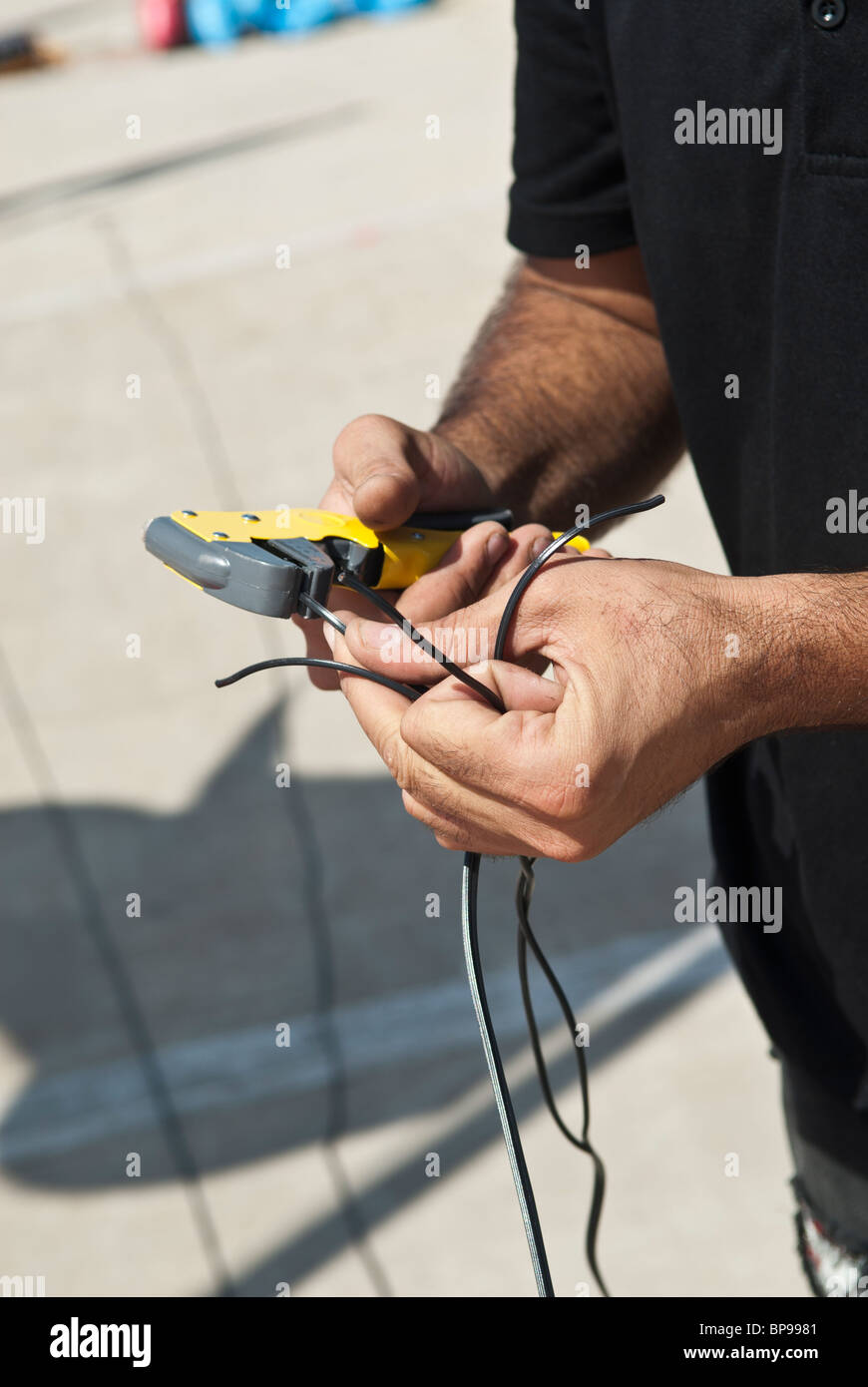
A second actuation released the mechanism to return to the rest position. Wood, now of Rockville IL, added reinforcements, replaceable blades, and blade stops in 19 design was also equipped to block the halves open after stripping to avoid crushing the freshly stripped wire as it returned to its rest position. The design was refined by Herman Gerhard Jan Voogd of the Netherlands eliminating the awkward 4 bar mechanism taking on the general outline that it has kept since. The compound automatic wire stripper was first patented in 1915 by Stuart G. Once the device is clamped on, the remainder of the wire can simply be pulled out, leaving the insulation behind.Įuropean-style wire strippers look more like a notched pincer, with a grab that is adjusted with a screw. This allows the user to match the notch size to the wire size, thereby eliminating the need for twisting, but can only be used on wire sizes that approximately match one of the notches.
#Using wire strippers manual
Another type of manual wire stripper is very similar to the simple design previously mentioned, except this type has several notches of varying size. This type of wire stripper can be used on wires of any size. Since the insulation is not bonded to the wire, it then pulls easily off the end. This type of wire stripper is used by rotating it around the insulation while applying pressure in order to make a cut around the insulation. The addition of a center notch makes it easier to cut the insulation without cutting the wire. Timely remove the iron chips wound on the plier's body to ensure smooth chip discharge.A wire stripper is a small, hand-held device used to strip the electrical insulation from electric wires.Ī US-style simple manual wire stripper is a pair of opposing blades much like scissors or wire cutters. If there is a breakage or other aspects of the problem, promptly carry out the corresponding repair. The rusty area of the knife mouth is cleaned with rust remover, and some lubricant is applied to the place of the rotating shaft to ensure the pliers can be used normally. If you crimp too thick wires with sharp pliers' heads, the pliers will break. Goggles should be worn when cutting wires to protect your eyes.ĭo not use light pliers to crimp hard wires. Use the correct angle for shearing, can not knock the plier handle and pliers head, or use the plier's blade to curl the wire.

The rubber sleeve on the handle is to increase the comfort of use unless the handle is specifically insulated, these rubber sleeves are not electrically resistant and cannot be used for electrically charged work. Ordinary pliers can not cut piano wire unless specifically have this function. Pliers can not be used on nuts and bolts, using a wrench would be better, and not easily damaged fasteners. Lubricate the pliers often, adding some lubricant to the hinge can extend the service life and can ensure the use of labor-saving.ĭo not extend the length of the handle to obtain greater shear force, but should use the larger specifications of the pliers or wire cutters.ĭo not put the pliers in an overheated place, otherwise, it will cause annealing and damage the tool.
#Using wire strippers crack
If abused in this way, the pliers will crack and break, and the edges of the pliers will be chipped off. If you want to strip pliers can be used for a long time, in addition to the use of stripping pliers in addition to standard operation, but also need to pay attention to the following matters.ĭo not use light pliers as a hammer or tap the handles of the pliers. Notes on the use of wire stripping pliers Release the tool handle, and remove the cable, the cable metal is then neatly exposed outside, and the rest of the insulation plastic will be intact.

Hold the cable stripping tool handle, clamp the cable, and slowly force the cable to slowly peel off the outer skin. Place the prepared cable in the middle of the stripping tool's blade and select the length of the cable to be stripped. When you insert the wire into the correct hole and squeeze the stripper handle together, it will cut through the plastic insulation precisely without damaging the wire.įirst, select the appropriate stripping blade according to the thickness type of the cable.
#Using wire strippers series
Wire strippers have a series of marked holes that match the specific gauge of wire for that stripper.

It is important to choose the correct wire stripping pliers for the gauge of wire you are stripping. Wire strippers come in a variety of shapes and sizes and often have serrated teeth to help strip the wire. The cutting slots are sized for various sizes of wire, but not for the wire's insulation coating, so when the wire passes through the slot, its insulation is left behind. This is accomplished using slotted cutting blades located in the jaws of the stripper. Most wire strippers are capable of many different tasks, but their main purpose is to strip insulation from the ends of wires. A wire stripper is similar to a pair of pliers or scissors.


 0 kommentar(er)
0 kommentar(er)
